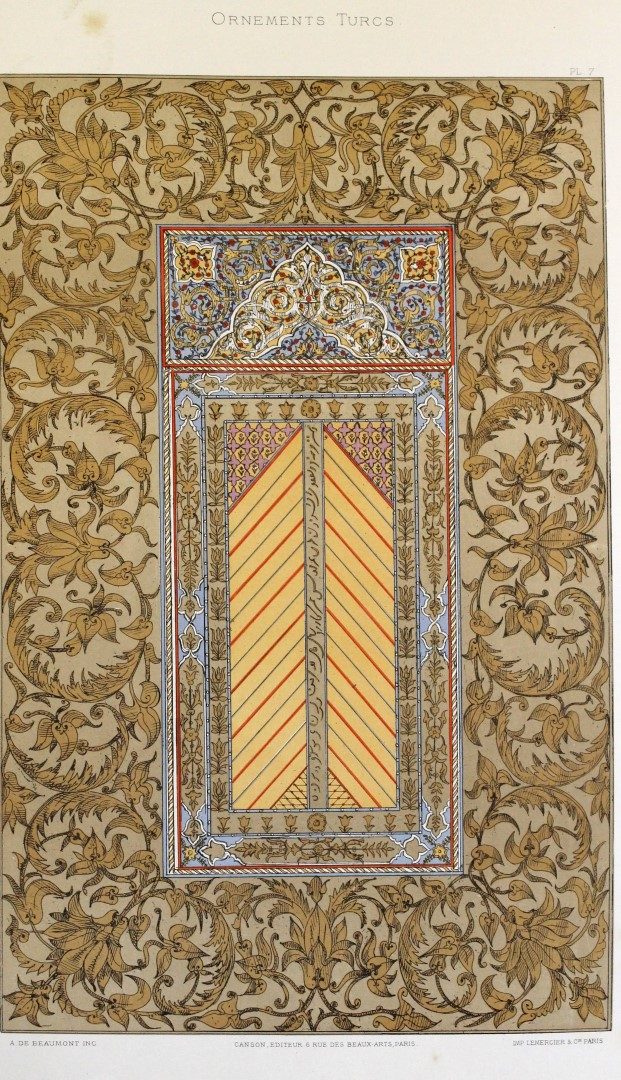Encyclopédie des Arts Décoratifs de l’Orient, Ornements Turc Recueil Dessins pour l’Art et l’Industrie.
Collinot, Eugène Victor & Adalbert de Beaumont.
Synopsis
Limited edition to 500 copies of which this copy is numbered 220. In the mid-19th century, Europe’s artistic and fashionable circles were enthralled by a vogue for all that was Oriental. Visitors to London galleries and Paris salon exhibitions became familiar with Middle Eastern desert and village life, with Arab, Persian and Turkish costume and decorative arts as they were recorded – or sometimes imagined – on canvas or in watercolours by European artist travellers.
The French ceramicist Joseph-Théodore Deck was the first to explore and revive Middle Eastern ceramic techniques in the creation of his own unique art. Ceramicist Eugène-Victor Collinot and his collaborator Adalbert de Beaumont, who had first encouraged Deck to look to Islamic prototypes, joined Deck in his early exploration of Islamic ceramics. In 1859, Collinot and Beaumont, themselves collectors of Islamic artefacts, published “Recueil de dessins pour l’art et l’industrie” (A Collection of Designs for Art and Industry), which contained detailed illustrations of Islamic ceramics and glass seen in their travels.
This influential design book revealed the arts of the Islamic world as a new source of inspiration to a receptive and enthusiastic audience of French artists and craftsmen. In its pages Deck found a 13th century enamel and gilt glass mosque lamp from Cairo – part of the Rothschild collection – lavishly decorated with ornament and calligraphy. Deck translated the bulbous lamp with its wide-flaring neck into a pair of ceramic vases, replacing its calligraphy with more floral ornament. Likewise, he converted a medieval Syrian glass vase illustrated in the Recueil into a ceramic vase alive with flora and fauna of Persian inspiration. Glazed in white, black, red and cobalt, the vase’s swelling, attenuated form is enlivened with acanthus, tiny gazelles and bold interlaced arabesque patterns.
In 1863, Collinot and Beaumont founded their own faïence factory specialising in Islamic inspired wares. Located in the Bois de Boulogne, the factory caused a sensation with its decoration of blue and white Islamic dishes. The competition with Deck was truly on. Collinot and Beaumont both published two other works “Ornements Arabes” (1883) and “Ornements de la Perse” (1880). Bibliographic reference: Creswell 451.








